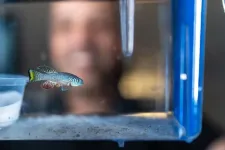(Press-News.org) Although medications can often help patients find a cure or respite from their condition, millions of people worldwide suffer from unpredictable drug toxicities every year. In particular, drug eruptions which manifest through symptoms such as redness, blisters, and itching on the skin, are quite common. Severe drug eruptions can become life-threatening and can have long-lasting consequences. Thus, understanding how and why drug eruptions occur is an important area of research in medical science.
To this end, previous studies have identified specific variants of certain genes as potential causal agents of drug eruptions. Scientists believe that the genes encoding the human leukocyte antigen (HLA), a protein expressed on the surface of leucocytes known to play an important role in the immune system, are involved in the onset of drug eruption. However, current theories cannot explain why HLA-related drug eruptions typically manifest on the skin rather than in multiple organs throughout the body.
To address this knowledge gap, a research team including Lecturer Shigeki Aoki, Kousei Ito, and Akira Kazaoka from the Graduate School of Medical and Pharmaceutical Sciences, Chiba University, conducted an in-depth study on the link between HLA and drug eruptions. Their findings were published in PNAS Nexus on April 2, 2024.
The researchers first conducted a series of experiments on keratinocytes from mice, which are the primary type of cells found in the skin. These keratinocytes were engineered to express a specific variant of the HLA gene called HLA-B*57:01, which specifically bind to the antiviral drug abacavir. Then, they validated these findings in genetically modified mice expressing HLA-B*57:01, that were exposed to abacavir.
The researchers found that HLA-B*57:01 expressing keratinocytes that were exposed to abacavir exhibited endoplasmic reticulum (ER) stress responses, such as immediate release of calcium into the cytosol and elevated expression of heat shock protein 70 (HSP70). They also observed an increased production of cytokines and immune cell migration. Abacavir exposure triggered HLA misfolding in the ER, leading to ER stress. Moreover, the researchers observed that the ER stress could be reduced by using 4-phenylbutyrate (4-PB). By alleviating this stress, they managed to suppress the onset of severe drug eruption symptoms. This newfound knowledge could form the basis for innovative treatment options for management of drug eruptions.
But how does this new information contrast with what was already known about HLA? “HLA molecules are an integral component of our immune system, that typically present foreign antigens to white blood cells, which judge these antigens as self or non-self. In this established role, HLAs are usually secondary players,” explains Dr. Aoki. “However, our research highlights a novel function of the HLA molecule within skin cells. We revealed that a specific HLA genotype in keratinocytes can recognize certain drugs as foreign, triggering an endoplasmic reticulum stress response.”
Taken together, the findings of this study uncover a new role of HLA proteins in sensing and responding to potential threats in skin cells. Thus, their functions may extend well beyond mere antigen presentation for the immune system. Moreover, considering that the variant of HLA possessed by an individual can be determined through genetic testing, this study could help develop preventive measures and diagnostics against severe adverse drug reactions. According to Dr. Aoki, this is in line with current research directions and trends in medical science. “In 10 years, we anticipate entering the ‘whole genome era,’ where personalized medicine based on individual genomes will become a standard practice,” he comments. He further adds, “Building on the findings of this study, we believe that a comprehensive understanding of the mechanism underlying HLA-dependent adverse drug reactions will enable the delivery of safe medical care, allowing patients to avoid unnecessary suffering due to side effects.”
Overall, future investigations in this research area might minimize the occurrence of drug eruptions and save people from potentially fatal adverse drug reactions.
About Dr. Shigeki Aoki
Dr. Shigeki Aoki is a lecturer at the Graduate School of Pharmaceutical Sciences, Chiba University, Japan. His research focuses mainly on cancer metabolism and drug toxicity. He has authored multiple papers published in reputed journals. Dr. Aoki is a member of various professional bodies in Japan. He has also received several awards for his research, including the Award for Young Scientists conferred by The Pharmaceutical Society of Japan.
END
Exploring the mechanism behind drug eruptions in the skin
Researchers uncover the crucial role of human leucocyte antigen proteins in mediating adverse drug reactions in skin cells
2024-05-15
ELSE PRESS RELEASES FROM THIS DATE:
Longer sprint intervals can improve muscle oxygen utilization compared to shorter intervals
2024-05-15
Physical activities like jogging, walking, cycling, and sprinting are activities known to engage the musculoskeletal system and result in the utilization of energy. Sprint interval training (SIT) is a type of sprinting exercise that involves cycles of intense exercise followed by a short duration of rest. How the durations of exercise and rest are structured can affect the impact of SIT on physiological responses. In recent years, the field of sports physiology has witnessed increased interest in optimizing SIT protocols. This surge can enhance the recognition of SIT’s efficacy in improving athletic performance and overall well-being, highlighting its versatility as a tool ...
Fighting fat and inflammation: Scientists develop powerful new compounds
2024-05-15
Modified derivatives of natural products have led to significant therapeutic advances and commercial success in recent times. Menthol is a naturally occurring cyclic monoterpene alcohol found in various plants, particularly in members of the mint family such as peppermint and spearmint. It is a common ingredient found in a wide range of confectionaries, chewing gums and oral care products. Interestingly, menthol also has high medicinal value due to its analgesic, anti-inflammatory, and anti-cancer effects.
In a recent study, a team of researchers led by Professor Gen-ichiro Arimura ...
New cardiac research will save women’s lives by improving detection of heart failure
2024-05-15
Peer-reviewed – Observational Study - People
An important new study has advanced how heart failure is detected in women – meaning more female patients can be diagnosed and at an earlier stage.
Researchers led by teams from the Universities of East Anglia (UEA), Sheffield and Leeds, have been able to fine-tune how magnetic resonance imaging (MRI) is used to detect heart failure in women’s hearts, making it more accurate.
Lead author Dr Pankaj Garg, of the University of East Anglia’s Norwich Medical School and a consultant cardiologist at the Norfolk and Norwich University Hospital, said: “By refining the method for women ...
Polyglycerol coating: A breakthrough in safer nanoparticle environmental remediation
2024-05-15
Nanoparticles (NPs) are often used to reduce environmental pollution by targeting harmful chemicals in soil and water that are released by industrial and agricultural activities. These NPs are engineered to absorb, degrade, or neutralize these pollutants, providing a potential solution to environmental contamination. However, when released into the environment, they can be consumed by organisms and transferred through the food chain, resulting in widespread toxicity.
To address this issue, a research ...
Circe Bioscience licenses technology to decarbonize industry with microbes developed at Wyss Institute at Harvard University
2024-05-15
The Wyss Institute for Biologically Inspired Engineering at Harvard University announced today that Circe, a startup developed at the Institute and spun out of Harvard, has signed a worldwide, exclusive licensing agreement coordinated by Harvard’s Office of Technology Development (OTD) to commercialize a novel bioproduction technology that could significantly reduce the carbon emissions of industries from food to aviation fuel.
Circe has raised more than $8 million to date from investors including Regen Ventures, Undeterred Capital, Ponderosa Ventures, Bee Partners, and Elementum Ventures.
“One of the great challenges ...
Parasitic worm likely playing role in decline of moose populations
2024-05-15
PULLMAN, Wash. – A parasitic worm that can infest the brains of moose appears to be playing a role in the decline of the iconic animal in some regions of North America.
Moose populations have been dwindling for years across the country due to many contributing factors, but new research at Washington State University has found the impact of Eleaophora schneideri, also known as the arterial worm, has likely been underestimated.
Researchers examined recently deceased Shiras moose in Idaho between March 2020 and July 2022. While the parasitic roundworm E. schneideri was not detected in any of the animals found in north Idaho, it was present in 10 of ...
Transcatheter valve replacement outcomes similar to surgery
2024-05-15
A new study demonstrated parity between a minimally invasive procedure to replace the aortic valve in the heart—transcatheter aortic valve replacement (TAVR)—and surgical aortic valve replacement (SAVR).
In the meta-analysis of seven randomized trials, published in JSCAI and presented at the 2024 EuroPCR conference in Paris, France, researchers compared the outcomes of 7,785 patients undergoing TAVR (a procedure that delivers a new aortic valve into the heart through a catheter) to those undergoing SAVR for severe aortic stenosis. ...
Germline regulation and sex differences: How they impact lifespan in vertebrates
2024-05-15
The study revealed unexpected and sex-specific effects of germline regulation on longevity and somatic repair in vertebrates. Contrary to classical evolutionary theories, it turns out that changing how the germline (the part responsible for reproduction) works can have different effects on males and females. This challenges conventional beliefs that reproduction and longevity are linked by a limited pool of resources. The research opens up new possibilities for understanding how our bodies age and the role of reproduction in that process. The findings ...
Detection of an Earth-sized exoplanet orbiting the ultracool dwarf star SPECULOOS-3
2024-05-15
The SPECULOOS project, led by the astronomer Michaël Gillon from the University of Liège, has just discovered a new Earth-sized exoplanet around SPECULOOS-3, an "ultracool dwarf" star as small as Jupiter, twice as cold as our Sun, and located 55 light-years from Earth. After the famous TRAPPIST-1, SPECULOOS 3 is the second planetary system discovered around this type of star.
Ultra-cool dwarf stars are the least massive stars in our Universe, similar in size to Jupiter, more than twice as cold, ten times less massive and a hundred times less ...
Scientists discover blood proteins that may give cancer warning 7 years before diagnosis
2024-05-15
Two Cancer Research UK-funded studies from Oxford Population Health have discovered proteins in the blood that could warn people of cancer more than seven years before it is diagnosed.
Scientists identified 618 proteins linked to 19 different types of cancer, including 107 proteins in a group of people who blood was collected at least seven years before diagnosis.
The team have discovered that these proteins could be involved at the very earliest stages of cancer, where it could be prevented.
They ...
LAST 30 PRESS RELEASES:
National poll: Less than half of parents say swearing is never OK for kids
Decades of suffering: Long-term mental health outcomes of Kurdish chemical gas attacks
Interactional dynamics of self-assessment and advice in peer reflection on microteaching
When aging affects the young: Revealing the weight of caregiving on teenagers
Can Canada’s health systems handle increased demand during FIFA World Cup?
Autistic and non-autistic faces may “speak a different language” when expressing emotion
No clear evidence that cannabis-based medicines relieve chronic nerve pain
Pioneering second-order nonlinear vibrational nanoscopy for interfacial molecular systems beyond the diffraction limit
Bottleneck in hydrogen distribution jeopardises billions in clean energy
Lung cancer death rates among women in Europe are finally levelling off
Scientists trace microplastics in fertilizer from fields to the beach
The Lancet Obstetrics, Gynecology, & Women’s Health: Taking paracetamol during pregnancy does not increase risk of autism, ADHD or intellectual disabilities, confirms new gold-standard evidence review
Taking paracetamol during pregnancy does not increase risk of autism, ADHD or intellectual disabilities
Harm reduction vending machines in New York State expand access to overdose treatment and drug test strips, UB studies confirm
University of Phoenix releases white paper on Credit for Prior Learning as a catalyst for internal mobility and retention
Canada losing track of salmon health as climate and industrial threats mount
Molecular sieve-confined Pt-FeOx catalysts achieve highly efficient reversible hydrogen cycle of methylcyclohexane-toluene
Investment in farm productivity tools key to reducing greenhouse gas
New review highlights electrochemical pathways to recover uranium from wastewater and seawater
Hidden pollutants in shale gas development raise environmental concerns, new review finds
Discarded cigarette butts transformed into high performance energy storage materials
Researchers highlight role of alternative RNA splicing in schizophrenia
NTU Singapore scientists find new way to disarm antibiotic-resistant bacteria and restore healing in chronic wounds
Research suggests nationwide racial bias in media reporting on gun violence
Revealing the cell’s nanocourier at work
Health impacts of nursing home staffing
Public views about opioid overdose and people with opioid use disorder
Age-related changes in sperm DNA may play a role in autism risk
Ambitious model fails to explain near-death experiences, experts say
Multifaceted effects of inward foreign direct investment on new venture creation
[Press-News.org] Exploring the mechanism behind drug eruptions in the skinResearchers uncover the crucial role of human leucocyte antigen proteins in mediating adverse drug reactions in skin cells





